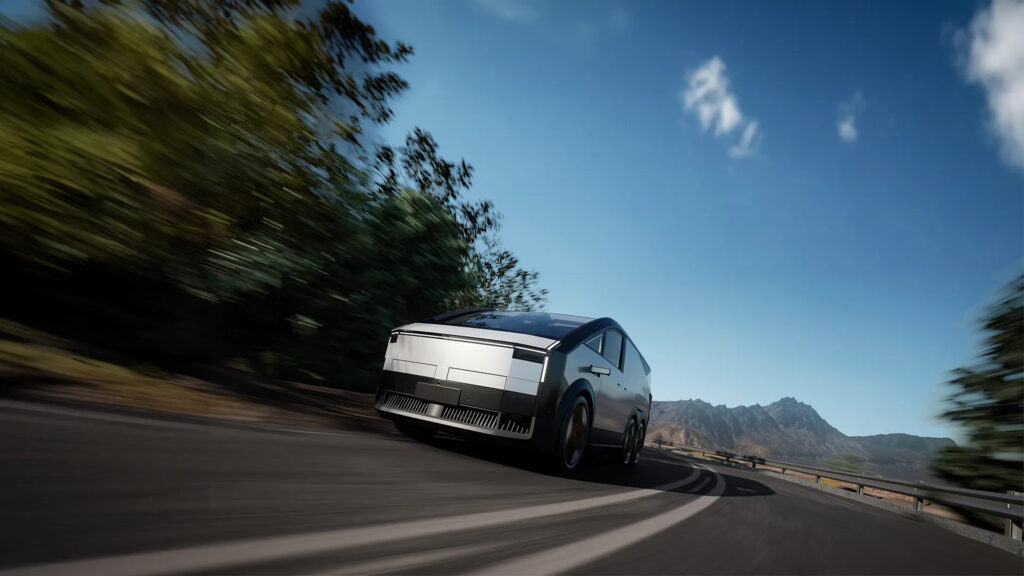
Prepare for takeoff—literally. XPeng (XPEV) AeroHT is gearing up to showcase its cutting-edge Land Aircraft Carrier (LAC) at CES 2025 in Las Vegas, giving us a taste of what could be the future of personal transportation.
With a modular design, a 1,000-kilometer range, and a hefty $280K price tag, this flying car is no mere sci-fi fantasy. It’s a reality scheduled for delivery in 2026.
What’s the Buzz About?
XPeng’s Land Aircraft Carrier represents a bold step forward in transportation innovation. The vehicle’s modular design integrates a ground-based “mothership” with an actual flying unit, allowing for seamless transitions between driving and flying.
The transformation process, which takes only five minutes, is activated with a single command. The mothership serves as both a transport hub and charging station for the aircraft, redefining practicality in personal mobility.

The vehicle operates on an advanced 800V silicon carbide high-voltage platform, which powers its impressive 1,000-kilometer range. The flying unit can manage 5–6 flights per charge, and recharging from 30% to 80% takes just 18 minutes. The entire system is designed to work with a standard Class C driver’s license, eliminating barriers to entry for potential users.
A Flying Car That’s Actually… Practical?
Despite its futuristic nature, the Land Aircraft Carrier maintains an element of practicality. At 5.5 meters in length and 2 meters in width, the mothership is slightly larger than a typical SUV but remains compact enough for urban driving. Its innovative design includes a trunk capable of storing the flying unit, which can be folded for transport.

The flying module itself is a lightweight two-seater constructed from carbon fiber. It offers both manual and autonomous flight modes, ensuring flexibility for different users and scenarios.
Whether navigating crowded city streets or soaring over traffic, the LAC provides a dual-purpose solution to modern commuting challenges. Charging on the go or while stationary adds to its convenience, making it a functional tool for those who can afford its luxury price tag.
Why CES 2025 Is the Perfect Launchpad
The Consumer Electronics Show (CES) in Las Vegas has long been a global stage for groundbreaking technological innovations, and XPeng AeroHT’s decision to showcase the LAC there is a strategic one.
The event draws a worldwide audience of tech enthusiasts and industry leaders, making it the ideal platform for unveiling a product as revolutionary as the Land Aircraft Carrier.

While the presentation at CES will undoubtedly create buzz, XPeng has yet to disclose any concrete plans for a North American launch. The CES debut appears to be more about solidifying the company’s reputation as a leader in flying car technology rather than signaling an immediate entry into the U.S. market.
Is the Future Here, or Is This Just a $280K Toy?
The Land Aircraft Carrier’s price point of $280,000 makes it clear that this vehicle is not intended for the average commuter. Instead, the initial production run of 10,000 units, set for 2026, is likely aimed at businesses, emergency services, and wealthy individuals seeking a unique way to bypass traffic.

Despite its exclusivity, the vehicle has already garnered significant interest, with over 2,000 pre-orders logged.
The real challenge lies not in the technology but in the broader ecosystem. Infrastructure, air traffic regulations, and public trust will all play critical roles in determining whether flying cars like the LAC become mainstream or remain a niche luxury.
Charge Complete: A Leap Toward Tomorrow
XPeng AeroHT’s Land Aircraft Carrier is more than just another futuristic concept; it’s a tangible step toward redefining how we travel. Its innovative modular design, impressive range, and ability to bridge terrestrial and aerial mobility make it a standout in the emerging field of flying cars.
As CES 2025 approaches, the world will be watching to see how this groundbreaking vehicle performs on the global stage. With its first deliveries planned for 2026, the Land Aircraft Carrier may soon transform what we think is possible in personal transportation, taking us one step closer to the skies.




